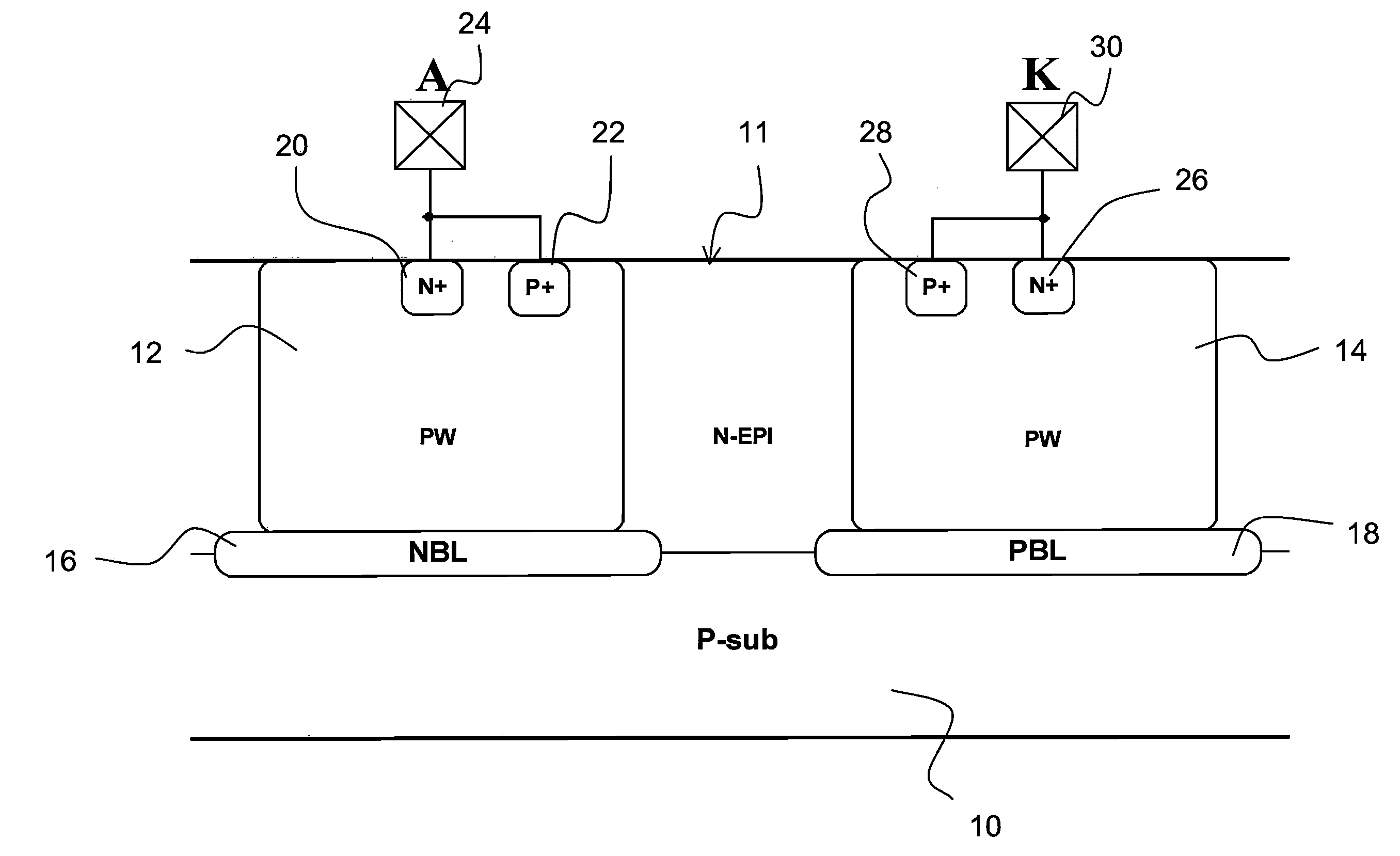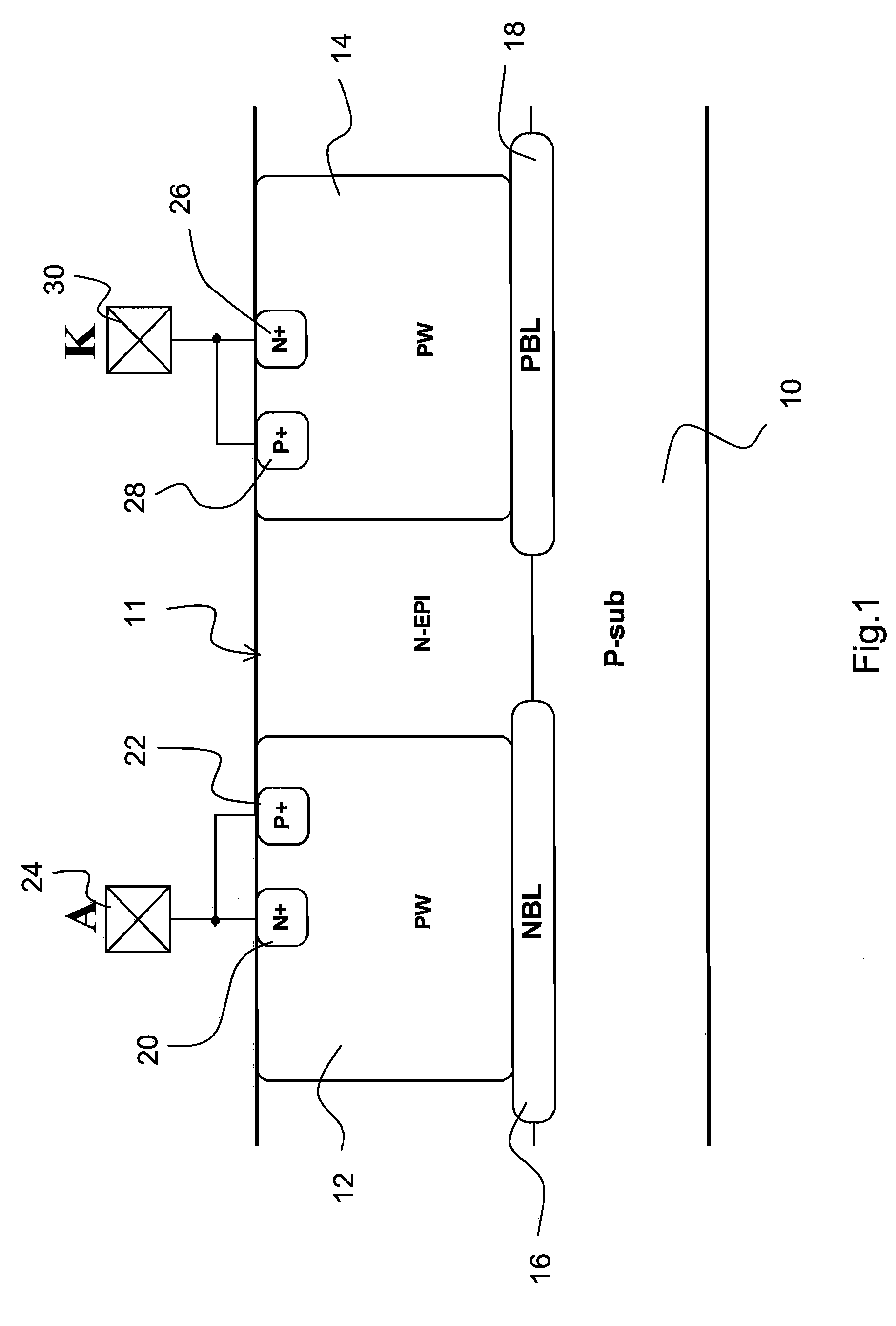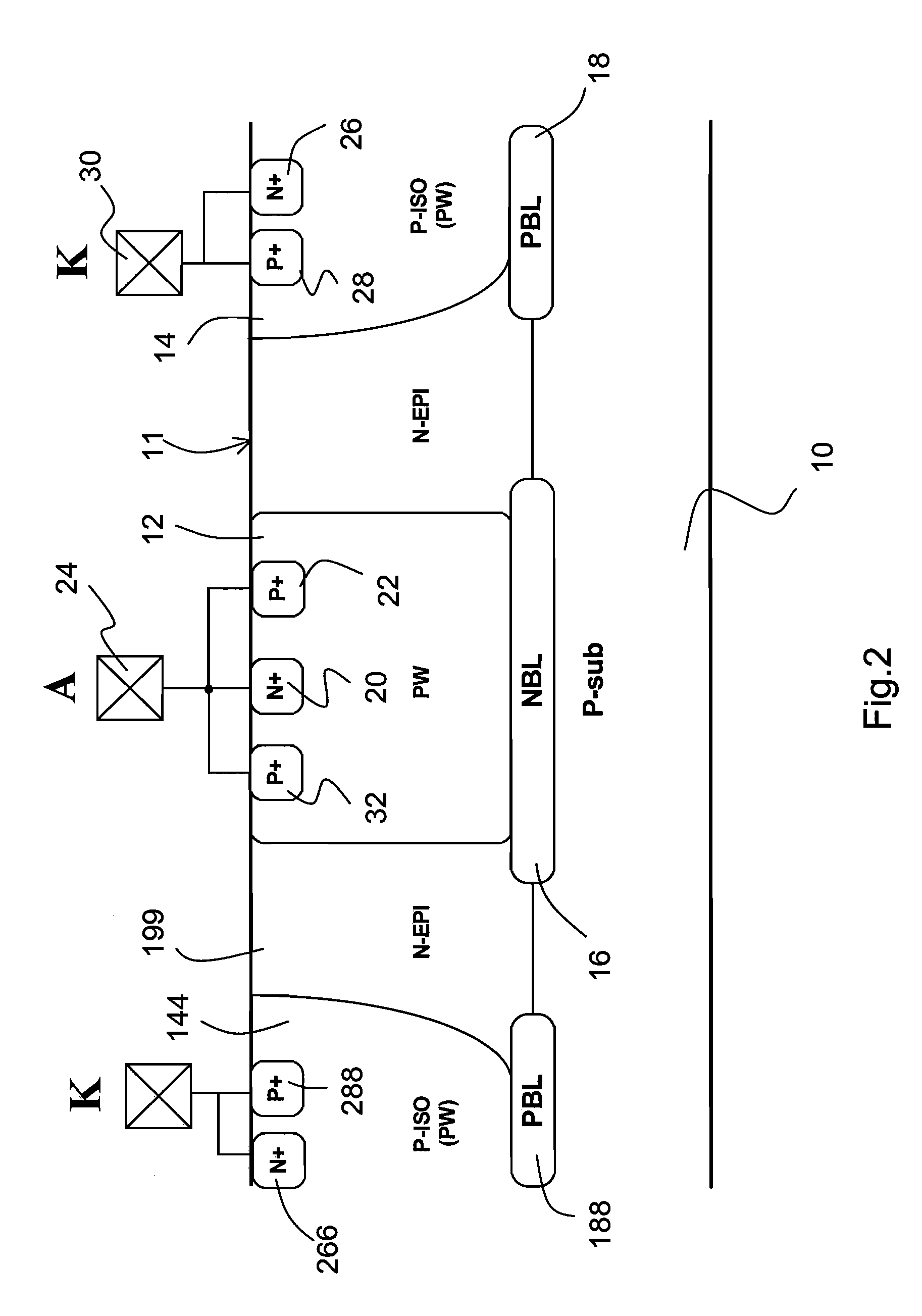Asymmetric bidirectional silicon-controlled rectifier
a silicon-controlled rectifier, bi-directional technology, applied in the direction of diodes, semiconductor devices, electrical apparatus, etc., can solve the problems of easy damage to the thin gate oxide layer of the submicron or deep submicron technology, easy damage to the integrated circuit product, and low esd robustness, so as to prevent electrostatic charge
- Summary
- Abstract
- Description
- Claims
- Application Information
AI Technical Summary
Benefits of technology
Problems solved by technology
Method used
Image
Examples
Embodiment Construction
[0026]Refer to FIG. 1 a diagram schematically showing an embodiment of an asymmetric silicon-controlled rectifier according to the present invention. In this embodiment, the asymmetric silicon-controlled rectifier of the present invention comprises: a P-type substrate 10; an N-type undoped epitaxial layer 11 formed on the substrate 10; a P-type first well 12 and a P-type second well 14 formed inside the undoped epitaxial layer 11 via a doping method, wherein both sides of the first and second wells 12 and 14 have portions of the undoped epitaxial layer 11 for separation; an N-type buried layer 16 formed on the bottom of the first well 12 and a P-type buried layer 18 formed on the bottom of the second well 14; a first semiconductor area 20 and a second semiconductor area 22 respectively having a conduction type opposite to each other, wherein both of them are formed inside the first well 12 and connected to an anode 24; a third semiconductor area 26 and a fourth semiconductor area 28...
PUM
 Login to View More
Login to View More Abstract
Description
Claims
Application Information
 Login to View More
Login to View More - R&D
- Intellectual Property
- Life Sciences
- Materials
- Tech Scout
- Unparalleled Data Quality
- Higher Quality Content
- 60% Fewer Hallucinations
Browse by: Latest US Patents, China's latest patents, Technical Efficacy Thesaurus, Application Domain, Technology Topic, Popular Technical Reports.
© 2025 PatSnap. All rights reserved.Legal|Privacy policy|Modern Slavery Act Transparency Statement|Sitemap|About US| Contact US: help@patsnap.com



